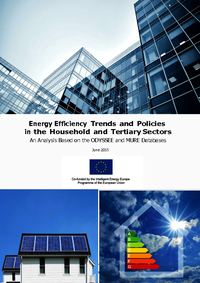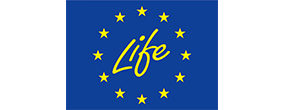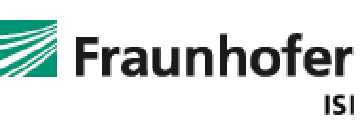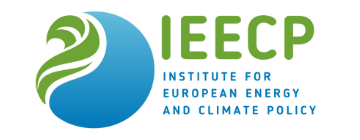Summary
This report proposes an evaluation of energy efficiency progress achieved in buildings since 2000 at EU level. It also looks at the success and failures of the implementation of EU Directives and national energy efficiency policies and measures.
The economic crisis has however lowered slowed down the energy savings. Consequently, the pace of energy efficiency improvements at EU level has slowed down from an average rate of 1.9%/year from 2000 to 2008 to 1.5%/year between 2008 and 2013.
Although EU legislation is a major driver of the policies and measures implemented in buildings, further attention to the implementation of EU legislation is needed in several areas: building renovation strategies; energy certificates and public procurement.
Key Messages – Energy Efficiency Trends and Policies in EU Buildings
Overall Trends
- The pace of energy efficiency improvements has slowed down since the beginning of the economic crisis in most countries and at EU level: 1.5%/year on average at EU level for the household sector since 2008, against 1.9%/year from 2000 to 2008.
- The electricity intensity is clearly increasing in most countries in services, despite the economic recession because of the growing number of new appliances, such as IT devices, linked to the development of internet and of new telecommunication types, as well as a spread of air conditioning.
- At the EU level, the increase of electricity consumption in services between 2008 and 2012 is mainly due to structural changes, and to a lesser extent, to increased comfort and productivity increases due to the diffusion of ICT1 and air conditioning. Energy savings have contributed to reduce growth in electricity consumption.
Trends in Households
- In summary, household energy efficiency has improved by 1.7%/year at EU level since 2000, thanks to the energy efficiency improvement for space heating and the diffusion of more efficient new electrical appliances (e.g. labels A+ to A++).
- The household energy consumption per dwelling has been decreasing regularly in most countries since 2000 (1.5%/year at EU level). Since 2008, electricity consumption per household has also decreased in many countries.
- The efficiency of household space heating, measured in kWh or GJ/m2, has improved steadily since 2000, by around 2.3%/year at EU level. The reasons are the deployment of more efficient new buildings and heating appliances and the renovation of existing dwellings. The low volume of construction since 2009 has, however, limited the impact of new dwellings standards. As a result of these trends, the share of space heating in total household consumption is declining (4 percentage points less than in 2000).
- The consumption of small electrical appliances has been growing rapidly until 2007 so that they now represent a higher share of the total consumption of appliances than large appliances. Large appliances are more and more efficient, with efficiency gains around 35% for cold appliances (refrigerators and freezers), washing machines and dish washers since 1990, thanks to labeling and eco-design regulations.
- The specific consumption per dwelling for lighting has decreased since 2000 in half of EU countries and at the EU level thanks to the diffusion of CFLs and LEDs.
- The increasing number of dwellings and appliances contribute to raise the household energy consumption. Their effect is however counter balanced by the energy efficiency improvements. Without these savings since 2000 the energy consumption of households would have been 60 Mtoe higher in 2012 at EU level.
Trends in the Tertiary Sector
- Energy consumption in the tertiary sector increased rather rapidly until 2008, and has been decreasing since the economic downturn, by 1.5%/year.
- Electricity consumption has continued growing since 2008 but at a lower pace (1.1%/year, against +3%/year before).
- The energy intensity of services has decreased in almost three quarters of the countries, with a larger reduction for countries with high intensity in 2000; this also means that in one fourth of the countries it is still increasing.
Policies and Measures
- EU legislation is a major driver in policies and measures implemented in the household and services sectors. New measures have mainly focused on the implementation of EU legislation which has required massive effort and resources. The introduction of purely national new measures has, therefore, been limited. Examples of areas where further attention to the implementation of EU legislation is needed are:
- building renovation strategies: there is room for improving the existing strategies and all countries have not yet adopted them
- energy certificates: there is still need for better visibility, databases need to be developed and consumer trust must be increased
- public procurement: energy efficiency is not yet systematically integrated into public procurement processes
- Smart meters and informative billing are empowering consumers to make better decisions and change behaviour. However, these need to be backed up by other energy services such as tailored advice as well as financing opportunities to actually induce change.
- Renewable energy production in buildings is promoted by a multitude of policies and measures. As a result, production of heat by heat pumps and solar is increasing. However, there are still considerable barriers in sales of surplus electricity to the network.
- Sectorial policies do not suffice in the transformation towards low carbon economy. Increased focus needs to be given to system level improvements. Some of the prerequisites for the transformation are effective inter-ministerial co-operation to avoid silo mentality, better spatial planning, innovative exploitation of the possibilities of digitalization and behavioural change.
- Energy efficiency and renewable energy entail multiple benefits beyond energy savings and CO2 emission reductions. It is important to recognize them in programme design and evaluation in order to have a full view of the impacts. One example is economic gains which go well beyond savings in energy bills.
1 Increased ICT can increase the energy consumption of an individual office or service but in the society as a whole digitalization is reducing energy consumption by, e.g., reducing mobility needs and more efficient use of space.
Archives
Energy Efficiency Policies in Buildings in the EU: November 2012






